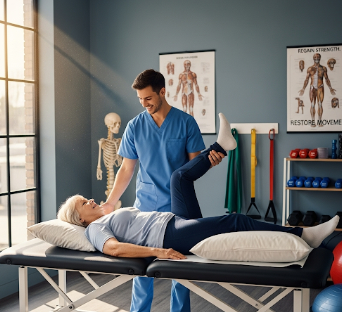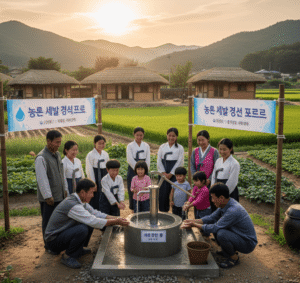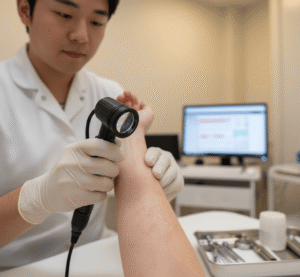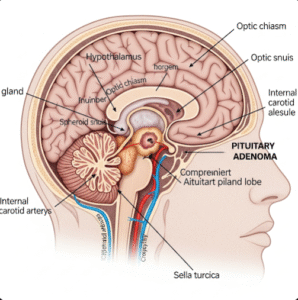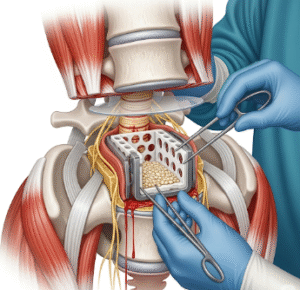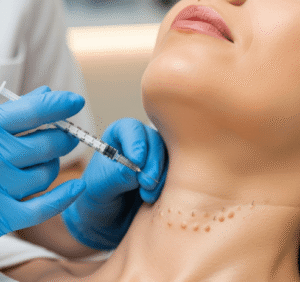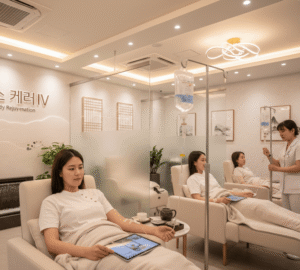What it is
Physiotherapy, also called physical therapy, is a healthcare profession focused on restoring, maintaining, and maximizing physical strength, function, and mobility. It involves manual therapy, exercises, education, and rehabilitation techniques to improve overall musculoskeletal, neurological, and cardiovascular health.
➡ Key objectives of physiotherapy:
- Restore movement and function after injury or illness
- Relieve pain and discomfort
- Prevent further injuries or complications
- Promote long-term physical fitness and well-being
💡 Important points:
- Physiotherapy is used for patients of all ages, from children with developmental disorders to older adults with chronic conditions.
- Treatments are personalized, based on the patient’s diagnosis, goals, and lifestyle.
- In Korea, physiotherapy is available in hospitals, rehabilitation centers, sports clinics, and home care programs, using modern equipment and evidence-based techniques.
Why it’s done
Physiotherapy is prescribed for a wide range of medical, surgical, and lifestyle-related conditions.
➤ Medical indications include:
- Musculoskeletal injuries → Sprains, strains, fractures, tendonitis, back pain
- Post-surgical rehabilitation → Joint replacement, ligament reconstruction, spinal surgery
- Neurological disorders → Stroke, Parkinson’s disease, multiple sclerosis, cerebral palsy
- Respiratory conditions → COPD, post-COVID recovery, cystic fibrosis
- Cardiovascular rehabilitation → Post-heart attack or heart surgery recovery
- Chronic pain management → Arthritis, fibromyalgia, lower back pain
➤ Key benefits:
- Reduces pain and improves physical function
- Accelerates recovery after injury or surgery
- Enhances strength, flexibility, and balance
- Prevents complications such as muscle atrophy or joint stiffness
- Promotes independence in daily activities
- Improves quality of life and overall well-being
Alternatives
While physiotherapy is highly effective, complementary or alternative treatments may include:
✔ Occupational therapy → Focuses on functional tasks and daily living skills
✔ Chiropractic care → Manual adjustment of spine and joints
✔ Acupuncture or massage therapy → Pain relief and relaxation
✔ Medications → Anti-inflammatory drugs or muscle relaxants for temporary relief
✔ Exercise programs → Home-based or supervised fitness routines
Note: Physiotherapy is often combined with these alternatives for comprehensive rehabilitation and optimal patient outcomes.
Preparation
Proper preparation ensures effective physiotherapy sessions:
🔹 Medical assessment
- Initial evaluation by a physiotherapist or physician
- Assessment of strength, flexibility, posture, and range of motion
- Review of medical history, imaging, and lab reports
🔹 Clothing and equipment
- Wear comfortable, loose-fitting clothing
- Use appropriate footwear or assistive devices if needed
🔹 Patient education
- Understanding the treatment plan and goals
- Commitment to exercise routines and follow-up sessions
- Awareness of precautions and potential discomfort
🔹 Environment preparation
- Physiotherapy can be conducted in clinics, gyms, hospitals, or home settings
- Ensure adequate space and safety for exercises and equipment
How it’s done
Physiotherapy involves a combination of manual therapy, exercise, and technology-assisted treatments.
➡ Step-by-step approach:
- Initial assessment and goal setting
- Evaluate movement, strength, balance, and posture
- Set short-term and long-term goals tailored to the patient
- Treatment modalities
- Manual therapy → Joint mobilization, soft tissue massage, stretching
- Therapeutic exercises → Strengthening, flexibility, balance, and coordination
- Electrotherapy → Ultrasound, TENS, laser therapy for pain relief and healing
- Hydrotherapy → Aquatic exercises for low-impact rehabilitation
- Respiratory physiotherapy → Breathing exercises and airway clearance techniques
- Patient education
- Instruction on home exercises and posture correction
- Guidance on pain management and ergonomic adjustments
- Progress monitoring
- Regular assessment of mobility, strength, and functional improvements
- Adjustments to the treatment plan based on patient progress
💡 Tips for effectiveness:
- Consistency with exercise routines is crucial
- Follow physiotherapist instructions closely
- Communicate any pain, discomfort, or limitations during sessions
Recovery / Expected Outcomes
Physiotherapy can significantly improve mobility, function, and quality of life, depending on the condition and patient compliance.
🔹 Short-term recovery:
- Pain relief and reduced inflammation
- Improved joint flexibility and muscle strength
- Enhanced balance and coordination
🔹 Long-term outcomes:
- Sustained improvements in movement and posture
- Prevention of recurrent injuries or chronic pain
- Increased independence in daily activities
- Better physical fitness and overall well-being
🔹 Clinical benefits:
- Faster post-surgical recovery
- Enhanced performance in sports and physical activities
- Improved management of chronic conditions like arthritis or COPD
Complications / Considerations
Physiotherapy is generally safe, but some considerations include:
⚠ Muscle soreness or fatigue → Common after exercises
⚠ Temporary pain increase → Can occur when addressing stiff or injured areas
⚠ Improper technique → May lead to injury if exercises are done incorrectly
⚠ Underlying medical conditions → Heart disease, fractures, or neurological issues require supervision
Mitigation:
- Work with licensed physiotherapists
- Communicate pain levels and limitations
- Follow prescribed exercise intensity and frequency
- Ensure proper warm-up and cool-down routines
Treatment Options in Korea
Physiotherapy is widely accessible across hospitals, rehabilitation centers, sports clinics, and home care programs in Korea:
🏥 Hospitals offering physiotherapy:
- Seoul National University Hospital (SNUH) → Orthopedic, neurological, and cardiopulmonary physiotherapy
- Asan Medical Center → Comprehensive rehabilitation programs with modern equipment
- Samsung Medical Center → Sports, musculoskeletal, and post-surgical physiotherapy
- Specialized rehabilitation clinics → Focused physiotherapy for stroke, cerebral palsy, and chronic pain
💰 Insurance and cost:
- National Health Insurance covers medically necessary physiotherapy under prescribed conditions
- Private insurance may cover additional sessions, home physiotherapy, or specialized treatments
- Costs vary depending on hospital, duration, and type of therapy
🔹 Additional support:
- Home-based physiotherapy for elderly or immobile patients
- Patient education programs for self-management of chronic conditions
- Integration with occupational therapy, speech therapy, and pain management
Conclusion
Physiotherapy in Korea is a safe, effective, and versatile treatment for a wide range of musculoskeletal, neurological, and cardiopulmonary conditions.
By using manual therapy, exercises, and modern rehabilitation technology, physiotherapy provides:
- Pain relief and functional restoration
- Prevention of injuries and chronic complications
- Improved mobility, strength, and balance
- Enhanced quality of life and independence

